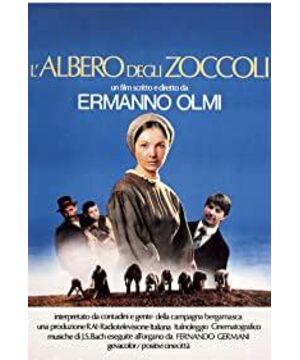"Geta Tree" is a typical prose film. The narrative style of the film is objective and full of dynamics. It seems that the details and trivial matters are full of thinking about meaning and value. The narrative technique of the prose type weakened the contradiction to a certain extent but refined the emotion. The life of three tenants is described in "The Clog Tree", and the film "Happy Lazzaro" with almost the same background is used to compare the two films in portraying the people at the bottom level. This reflects a more stream of life. We see their joy of working together and sitting together, and we also see the reality of their family's difficulties and life constraints. Such an objective display not only reduces the sense of distance in the audience, but also makes the characters more vivid. In addition, the narrative of "Geta Tree" alternates among the three families. The woman who washes the laundry, the father who cuts the tree, and the married daughter. The contradictions of the three families are different. The interspersed narrative will make the little unsatisfactory and stump in life. Pile pieces are connected in series Achieve the effect of dominoes. Let the audience's attention from the emergence of one small contradiction after one to the resolution is on the three families. The treatment of this point is different from the impression that the prose film is calm and implied by the waves. It separates the contradictions and refines them into specific events. It is not trivial to look at it, but as it evolves step by step, it can bring out the inexhaustible behind it. , It was discovered that the contradictions between piles and piles are linked and crises. This is the whole picture of life. In addition to the above two points, I think the film incorporates religious elements and education into the narrative. It is the existence of these beliefs and transitions that make the film more thought-provoking. The rosary read over and over again is useful to the three families in a sense. We noticed that there was a rosary when cutting down a tree, and there was a rosary when we left, and we would say a few words without knowing what to do. Religion here is more of self-comfort, like facing the cruelty of life, but religion can at least balance their hearts. (Thousand Paper Cranes in Japan) Education does not appear many times in the film, but it represents the future of the three families as a whole. It is difficult and weak and there is no clear future. The emergence of the religion of education shows their helplessness even more starkly, and the difficulty of education is even weaker to move forward. Judging from the overall feeling of the film, I think the three depictions in "The Clogs Tree" all explain one point implicitly. The temperament of owning the land that grew up on that piece of land is quietly standing next to each other in the test of rain and snow. Nine out of ten unsatisfactory things are the trivialities of firewood, rice, oil and salt, but in the trivialities that we do not go into, we see a kind of numbness and indifference, numbness of pain and indifference to imagination. We shouldn't criticize the numbness and indifference here. Maybe in a different background, with tall buildings and busy traffic, we still can't solve the overwhelming interest and moral kidnapping.
View more about The Tree of Wooden Clogs reviews







